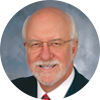In the mid-1980s, my company began the arduous task of conducting clinical research and clinically relevant basic science investigations relevant to the Activator Methods Chiropractic Technique (AMCT).
By March 1990, when the first Consensus Conference on Validation of Chiropractic Methods was held in Seattle, I must have chatted with most if not all of the major technique developers in the profession. I tried to encourage them to join me in this uncharted territory: technique research. To a person, all of them said, "I know you are right, but we wouldn't even know where to begin." I assured them that I too was flying by the seat of my pants, but with the help of several "pointy-headed" DCs and PhDs, we could learn together as we went along. Two years later, the nonprofit research organization I'm affiliated with (The National Institute of Chiropractic Research) helped to finance one of the first textbooks on clinical research methods for chiropractors.1 It was not a best seller.
Fast-forward to 2005, and AMCT enjoys some preliminary scientific data.2 Unfortunately, the same cannot be said for many other brand-name methods, and the consequences are beginning to show. Aetna, one of the largest health care insurers in the U.S., has just released a list of chiropractic techniques that will not be covered under its policies. You may be surprised at the chiropractic methods that made this unfortunate roster, some of which have been around for generations: Sacro-Occipital Technique (SOT), Bio-Energetic Synchronization Technique (BEST), Neuro-Emotional Technique (NET), Network Chiropractic, manipulation under anesthesia (MUA), and some components of Applied Kinesiology. At the risk of sounding smug ("I told you so"), the dilemma confronting these techniques is not that available scientific information has shown them to be ineffective or unsafe. The problem is a lack of adequate data upon which to base any decisions about their safety or efficacy. For the sake of the individual practitioner, I can only recommend that you investigate whether your preferred clinical methods are covered by the major carriers.
Because AMCT involves a "medical device" (adjusting instrument), we were challenged by Medicare in the early 1980s to prove to them that Activator adjustments qualified for payments under Medicare statute. It was a real struggle, but we obtained a letter from Medicare qualifying the Activator instrument. In the years since, various forms of adjusting devices have come into the marketplace; these instruments may or may not be similarly approved.
With Medicare auditing a record number of offices, I recommend you check with the vendors and/or manufacturers of any adjusting instruments. Ask them to produce a similar letter qualifying the use of their instrument under the Medicare statute. Do not take their word for it - have them produce the letter. Failing this, you - not the instrument vendor - may have to reimburse Medicare for payments received based upon unapproved equipment.
As many of us have come to recognize, Medicare is becoming a model that private, third-party payers look to as a model for paying health care providers' claims. For better or worse, this federal bureaucracy's increasing demand for documentation of patient care is part of the evidence-based reorientation all doctors are experiencing in this age of accountability. We in chiropractic have been somewhat slow to awaken to these demands, and we ignore them at our own risk.
Yesterday, I spoke with a very experienced, caring, and (in my judgment) very competent chiropractor fined by Medicare for nearly a quarter of a million dollars (including all payments received from the feds for the past two years!). They tried to nail him for fraud, and it was only because of rather competent legal counsel that he was able to beat those charges. This doctor complained to me about Medicare's expectations that doctors must keep SOAP notes daily - something he was not taught in chiropractic college.
Experiences such as this prompted us at the Activator Clinic in Phoenix to install and implement a fully integrated practice management system with electronic health records. We are now digitally qualified to handle not only Medicare, but also any and all insurance paperwork with comfort.
I used to think our profession was the recipient of unusual documentation demands - just more evidence of the bias against chiropractors in the federal system. However, my experience as a contract physician at the Carl T. Hayden Veterans Administration Ambulatory Health Care Center in Phoenix suggests otherwise. The VA hospital system has employed electronic medical record-keeping since 1983. This system was necessitated by the mobility of veterans, who transfer from one state to another. The VA decided that good clinical care required that veterans' clinical records follow them from VA site to site. The numerous caregivers veterans encounter in that system needed to know what had been done to the patient along the way. The experience has opened my eyes to the necessity of records that are easy to interpret and easy to transfer from facility to facility.
Like it or not, the age of accountability has arrived in the health care marketplace. Documentation of clinical effectiveness, whether by the individual clinician (SOAP notes and outcome measures) or in the more controlled environment of prospective research, is essential. We must dot the I's and cross all the T's (be sure your equipment is authorized) if we wish to survive in this brave new clinical world. There is no choice.
References
- Fuhr AW, Menke JM. Status of Activator Methods chiropractic technique, theory and practice. Journal of Manipulative & Physiological Therapeutics Feb 2005; 28(2):135
- Keating JC. Toward a Philosophy of the Science of Chiropractic: a Primer for Clinicians. Stockton, CA: Stockton Foundation for Chiropractic Research, 1992.
Arlan Fuhr, DC
Phoenix, Arizona
Click here for previous articles by Arlan Fuhr, DC.





